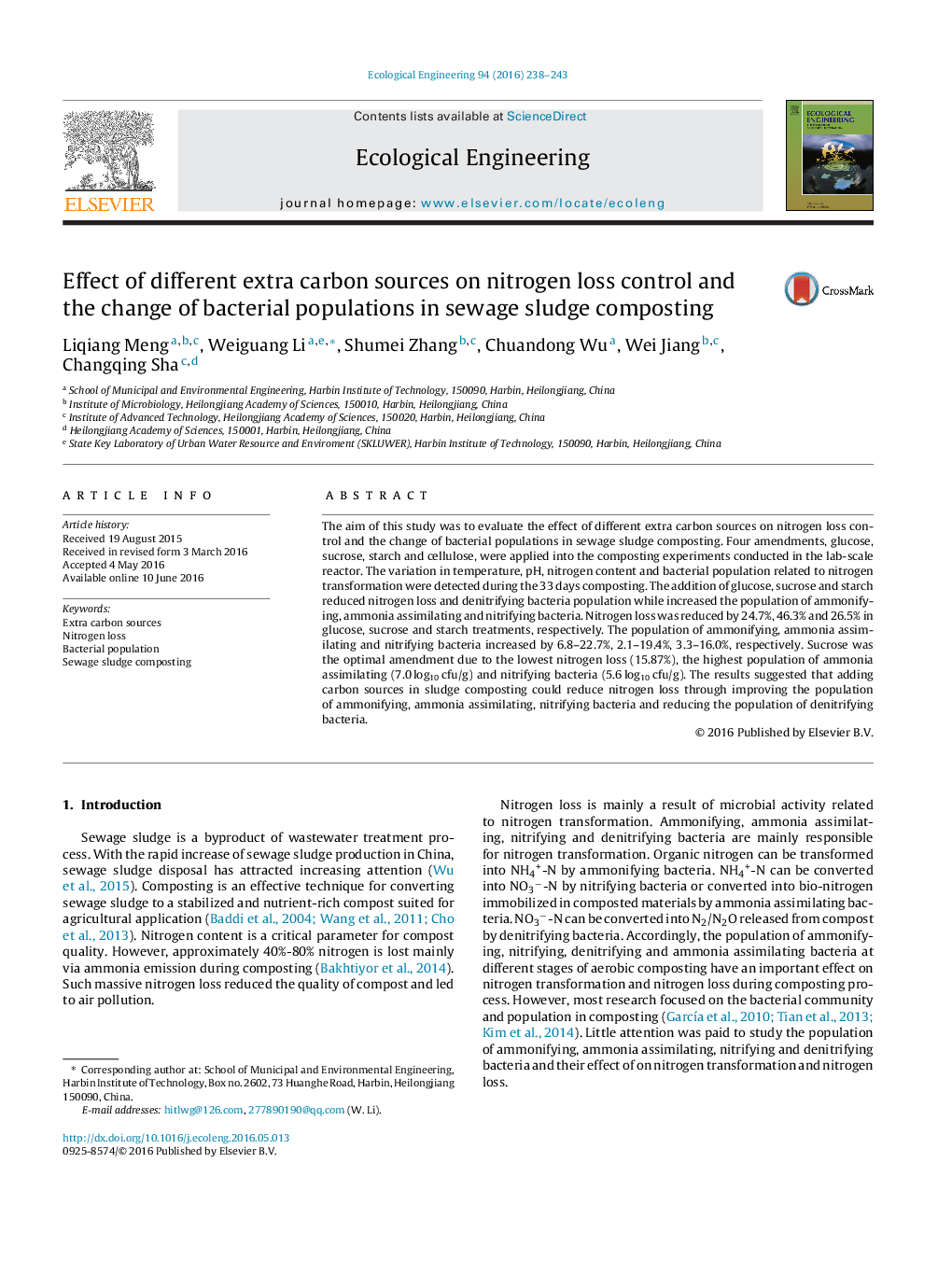| کد مقاله | کد نشریه | سال انتشار | مقاله انگلیسی | نسخه تمام متن |
|---|---|---|---|---|
| 4388550 | 1618005 | 2016 | 6 صفحه PDF | دانلود رایگان |
• Extra carbon source has an effect on four kinds of bacterial population.
• The addition of glucose, sucrose and starch can reduce nitrogen loss.
• Nitrogen loss negatively correlated with the population of ammonifying, ammonia assimilating and nitrifying bacteria.
• Sucrose is the optimal amendment for reducing nitrogen loss.
The aim of this study was to evaluate the effect of different extra carbon sources on nitrogen loss control and the change of bacterial populations in sewage sludge composting. Four amendments, glucose, sucrose, starch and cellulose, were applied into the composting experiments conducted in the lab-scale reactor. The variation in temperature, pH, nitrogen content and bacterial population related to nitrogen transformation were detected during the 33 days composting. The addition of glucose, sucrose and starch reduced nitrogen loss and denitrifying bacteria population while increased the population of ammonifying, ammonia assimilating and nitrifying bacteria. Nitrogen loss was reduced by 24.7%, 46.3% and 26.5% in glucose, sucrose and starch treatments, respectively. The population of ammonifying, ammonia assimilating and nitrifying bacteria increased by 6.8–22.7%, 2.1–19.4%, 3.3–16.0%, respectively. Sucrose was the optimal amendment due to the lowest nitrogen loss (15.87%), the highest population of ammonia assimilating (7.0 log10 cfu/g) and nitrifying bacteria (5.6 log10 cfu/g). The results suggested that adding carbon sources in sludge composting could reduce nitrogen loss through improving the population of ammonifying, ammonia assimilating, nitrifying bacteria and reducing the population of denitrifying bacteria.
Changs of the population of bacteria for ammonifying(a), ammonia assimilating(b), nitrifying (c) and denitrifying(d) during sewage sludge composting amended by extra carbon sources.Figure optionsDownload as PowerPoint slide
Journal: Ecological Engineering - Volume 94, September 2016, Pages 238–243
